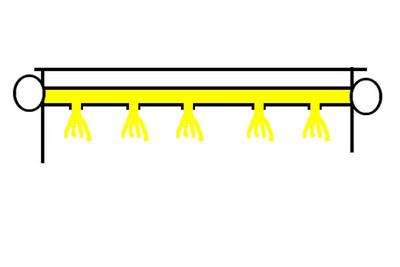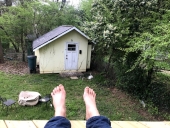
 11
11





Gardens in my mind never need water
Castles in the air never have a wet basement
Well made buildings are fractal -- equally intelligent design at every level of detail.
Bright sparks remind others that they too can dance
What I am looking for is looking for me too!

 7
7




I make a Maple Syrup instructional movie! Check it out HERE
SKIP books, get 'em while they're hot!!! Skills to Inherit Property
See me in a movie building a massive wood staircase:Low Tech Lab Movie
 7
7




Mike Haasl wrote:Would a large percentage of the light just shoot out the other end of the tube? Maybe a "one-way" mirror at each end would bounce the light back the way it came.
Might it be better to just have the tube feed one skylight in a room? Then there can be a 45 degree mirror to bounce all the light down into the room.
Cool idea!

Nails are sold by the pound, that makes sense.
Soluna Garden Farm -- Flower CSA -- plants, and cut flowers at our farm.
 6
6




Mike Haasl wrote:Would a large percentage of the light just shoot out the other end of the tube? Maybe a "one-way" mirror at each end would bounce the light back the way it came.
Might it be better to just have the tube feed one skylight in a room? Then there can be a 45 degree mirror to bounce all the light down into the room.
Cool idea!
Gardens in my mind never need water
Castles in the air never have a wet basement
Well made buildings are fractal -- equally intelligent design at every level of detail.
Bright sparks remind others that they too can dance
What I am looking for is looking for me too!

 5
5




 9
9




Gardens in my mind never need water
Castles in the air never have a wet basement
Well made buildings are fractal -- equally intelligent design at every level of detail.
Bright sparks remind others that they too can dance
What I am looking for is looking for me too!

 8
8
















 9
9




 11
11




Best luck: satisfaction
Greatest curse, greed




 10
10




 4
4




Pearl Sutton wrote:I dislike all roof penetrations after what I found when I tore the roof off my last home. What a mess. And then they tried to repair the leaks...
The premade tubes are expensive, that's part of why I dislike them too. Very spiffy, but way too expensive. If you look at what they are, the kit has the skylight, and all the flashing etc to attempt to keep it from leaking, and tube. I believe the close to perfect mirror surface of the tubes is way overkill. I had a video store for a while giving me all their dead disks. I did a test run of a bunch in a box, being the reflective surface. Bounced a LOT of light around, and beat the mirrored one I tested it against in that the mirrored one made a slightly brighter, straighter light, but the disk made a more diffused light, bounced around the room more. Subjectively, the diffused light made the room look brighter than the single spot of more intense light did.
:D
 3
3





 6
6




Hans Albert Quistorff, LMT projects on permies Hans Massage Qberry Farm magnet therapy gmail hquistorff
 8
8




Trees are our friends
 5
5




Hans Quistorff wrote:Warning visitors to a restroom with solar tubes tend to spend futile time flipping switches trying to turn off the light before they leave.
But mine works great even moon and star light when available.
Best luck: satisfaction
Greatest curse, greed
 6
6




Your friend isn't always right and your enemy isn't always wrong.
 3
3




Each generation has its own rendezvous with the land... by choice or by default we will carve out a land legacy for our heirs. (Stewart Udall)
 1
1




Hans Quistorff wrote:Warning visitors to a restroom with solar tubes tend to spend futile time flipping switches trying to turn off the light before they leave.
But mine works great even moon and star light when available.
 2
2




Daniel Schmidt wrote:The elementary school I went to was a fairly new building at the time, . . .

|
Their achilles heel is the noogie! Give them noogies tiny ad!
Rocket Mass Heater Resources Wiki
https://permies.com/w/rmh-resources
|





